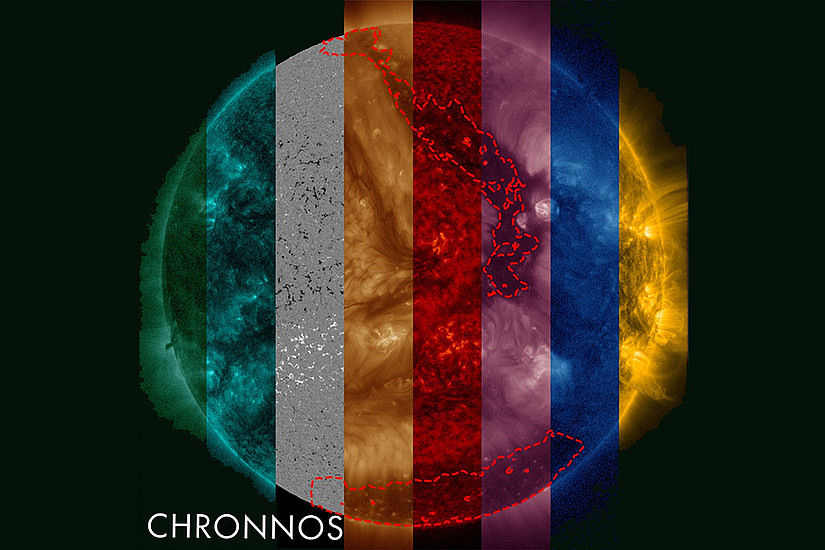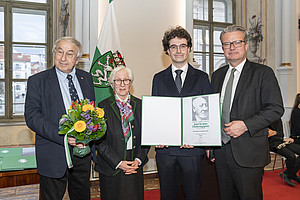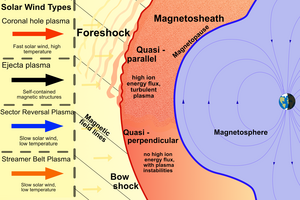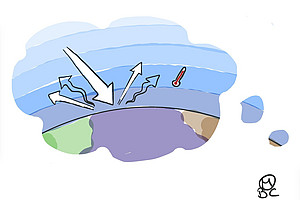It shines dazzlingly bright but also has its dark sides. In the outermost layer of the sun’s atmosphere, the corona, there are often dark patches that look like “holes”. These are caused by magnetic fields, and they produce recognisable effects which are noticeable not only in space, but also on the Earth, because they disturb satellites and technology-based communications. Astrophysicists at the University of Graz worked in collaboration with the Skoltech Space Center in Moscow to develop a method which uses artificial intelligence to recognise these coronal holes automatically, making it possible to provide an early warning of this threat from space.
It may not have always felt like it in recent weeks, but in fact the sun is extremely active. On the surface and in its atmosphere there are high-energy and highly complex magnetic fields which cause a range of phenomena. “Coronal holes occur because plasma particles escape through the sun’s atmosphere along the lines of the magnetic fields and out into space,” explains Robert Jarolim, an early-career researcher at the University of Graz’s Institute of Physics. “This can result in high-speed solar winds which reach the Earth’s magnetic field. Possible effects include geomagnetic storms, which can cause interference for technological systems on our planet,” continues Jarolim. This makes it all the more important to be able to identify these coronal holes and other solar phenomena accurately and promptly.
However, even using the high-precision solar telescopes on board satellites, it is not always easy to recognise the dark regions of the corona reliably. From now on this will be done using a new procedure that was developed by researchers at Uni Graz’s Institute of Physics, together with the Russian Skoltech Institute. Their computer-aided programme CHRONNOS (Coronal Hole RecOgnition Neural Network Over multi-Spectral-data) uses artificial intelligence to perform this task reliably and automatically, says Jarolim, who is the lead author of the paper on these findings, which was published recently in the specialist journal “Astronomy & Astrophysics”.
“The programme photographs the sun using a range of ultraviolet light wavelengths and combines these images with maps of the magnetic field. The images are then superimposed. Using a specially formulated algorithm, the CHRONNOS network can distinguish coronal holes from other dark regions of the sun, such as filaments, for example,” explains co-author Astrid Veronig, a professor at the Institute of Physics and director of the solar observatory at Kanzelhöhe.
The scientists also expect this enhanced mapping to allow additional conclusions to be drawn on the development of the solar cycle. Over the course of a cycle which lasts approximately eleven years, coronal holes occur more frequently and with greater impact in the phase of least activity. “This may allow us to predict the next solar maximum more accurately in future,” says Jarolim.
Video
Animation of coronal holes – outlined in red – over an eleven-year solar cycle
Publication
Multi-channel coronal hole detection with convolutional neural networks
R. Jarolim, A. M. Veronig, S. Hofmeister, S. G. Heinemann, M. Temmer, T. Podladchikova, K. Dissauer, Astronomy & Astrophysics
https://doi.org/10.1051/0004-6361/202140640




